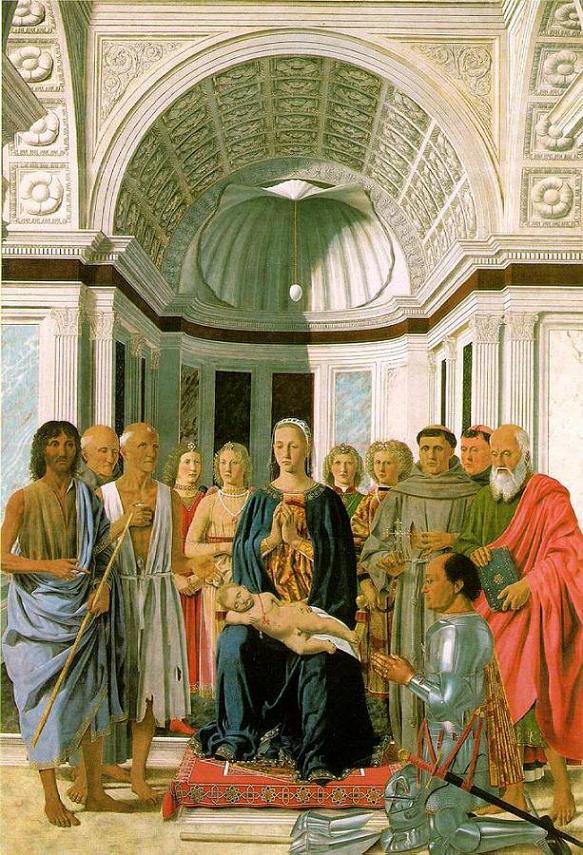
LIFE AS MYTH
![]()
JOURNAL
![]()
JOURNAL 2009
![]()
A feminine myth
Creating a new myth
![]()
AUTUMN 2009
A feminine myth
The power of unanswered prayer
![]()
LIFEWORKS
![]()
ATLAS
![]()

AUTUMN 2009
THE GEOMETRY OF COMPASSION
Madonna di Senigallia, Piero della Francesca. Galleria Nazionale delle Marche, Urbino.
Suffering is from the Latin root sufferre which means to carry or to bear. Therefore, human suffering might be understood as carrying the weight of our own humanity.
Compassion is from the Latin root com + patī which means to suffer with, or to share suffering. Therefore, compassion might be understood as sharing the weight of another's humanity.
The Montefeltro altarpiece also known as Virgin with child, saints, angels and Federigo II da Montefeltro or The Brera Madonna [detail], Piero della Francesca, 1465. Pinacoteca di Brera, Milan; The lamentation, Simon Marmione. 1470. Metropolitan Museum of Art, New York.
As a teenager Piero della Francesca, the Italian artist who created the Montefeltro altarpiece, studied his craft in Florence while working with Dominico Venezian on a series of murals for the hospital Santo Maria Nuova. It was during this early part of his career that he began exploring the relationship between mathematics and art. One treatise authored by him, On perspective for painting, is the first to deal with the mathematics of perspective [creating a three dimensional effect in two dimensional works]. His mathematical knowledge influenced his art as evidenced by his use of foreshortening, geometric forms and innovative perspectives.
This painting is rich with symbolic imagery which explores death, resurrection, and rebirth. The coral beads have two purposes in this painting, functional and symbolic. Renaissance infants sometimes used coral beads for teething. In the visual vocabulary of the Renaissance painter, they were also a symbol of resurrection and rebirth. The mother and infant Christ, flanked by attendants, echo the traditional composition of mother and adult Christ found in Renaissance depictions of the pieta. Note the single coral pendant which Francesca places on the right side of the infant's chest, a reference to the sword wound that Christ received on the cross.
Art historians interpret Francesca's incorporation of the shell as a way of portraying the rebirth of the pagan goddess in a more sacred form. The canopy above Mary provides a direct link to Venus and her mythological arrival in a shell at Cyprus. Francesca has suspended an egg from the canopy, creating a mirror motif to the traditional pearl within a shell. The earlier nature-based goddess had as the fruit of her creative act the pearl. The reimagined Renaissance goddess has the seed of the incarnate word.


